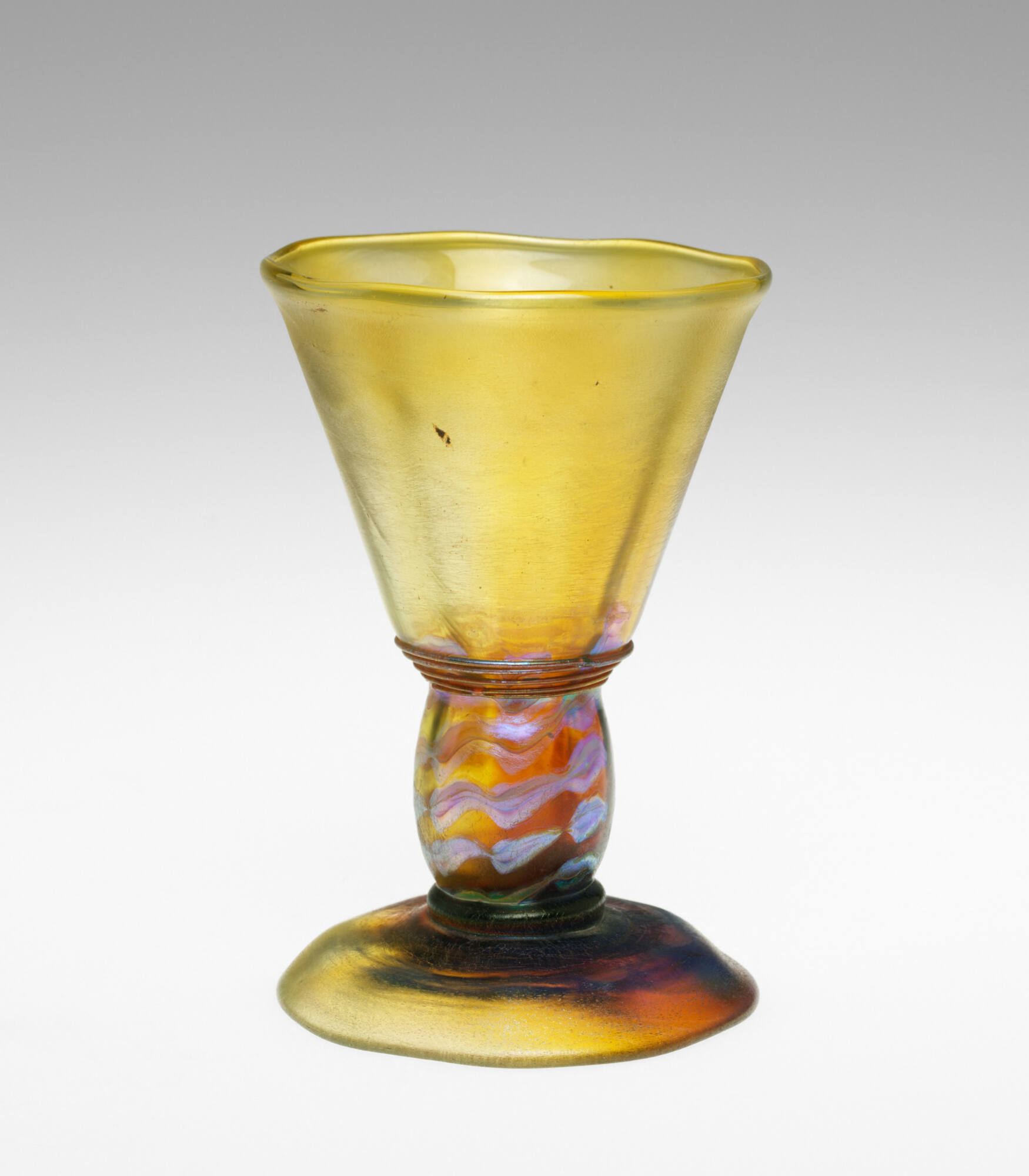Louis Comfort Tiffany
(American, 1848–1933)
Goblet, Horn Glass With Lustre Decorations

Object Details
Artist
Louis Comfort Tiffany
Date
ca. 1902
Medium
Glass
Dimensions
Height: 3 1/2 inches (8.9 cm)
Diameter: 2 1/2 inches (6.4 cm)
Credit Line
Gift of Louis Comfort Tiffany through the courtesy of A. Douglas Nash
Object
Number
57.072
BRIEF DESCRIPTION
This is a Tiffany goblet of translucent, yellow iridescent glass. Notice the bl(…)
BRIEF DESCRIPTION
This is a Tiffany goblet of translucent, yellow iridescent glass. Notice the blue luster decoration in a wave like pattern on the stem.
WHERE WAS IT MADE?
Tiffany glass was made at the Tiffany Glass Furnaces in Corona, located in Queens, New York.
WHO WAS THE ARTIST?
Louis Comfort Tiffany was the eldest son of Charles L. Tiffany, founder of Tiffany & Company, the New York jeweler. Tiffany was trained as a painter, studying with both George Inness and Samuel Coleman in New York and Leon Bailly in Paris. He eventually turned his attention to decorative arts and began experimenting with glass-making techniques in 1875. After success with stained glass windows and mosaics, Tiffany established the Tiffany Glass Company in 1885 and began devoting production to one-of-a-kind blown glass art objects. He soon became one of America’s most prolific designers, providing furniture, wallcoverings, textiles, jewelry and glass to some of society’s most important citizens.
HOW WAS IT MADE?
This goblet was likely created using a blowpipe. The iridescence of the glass was added by a process developed in the early 19th century in which metallic substances were either added to the batch when forming the vessel, or the surface of the vessel was coated with metallic oxides like stannous chloride or lead chloride before firing. Different oxides were known to produce different pigments.
The shiny blue luster decoration on the stem of vase is the result of a type of staining technique. In this technique, the surface of the vessel is painted with metallic oxides dissolved in acid and mixed with an oily medium. The vessel is then fired in an oxygen-free environment at around 1150 degrees Fahrenheit which causes metal to deposit a film that, when cleaned, becomes shiny.
WHY DOES IT LOOK LIKE THIS?
The term “horn glass” refers to the shape of the glass and the flared mouth, resembling a trumpet or horn. It is also similar to the beakers made in Bohemia during the medieval period (13th and 14th centuries).
This goblet is an example of Tiffany’s Favrile glass. In 1894, Tiffany patented his iridescent glass under the name Favrile. The word Favrile is derived from the Old English fabrile, meaning hand-wrought. Tiffany design was inspired by glass from ancient Rome and the Islamic world, Venice and Bohemia. Tiffany combined his talent as a colorist, naturalist, and designer with his experimentations on blown glass surfaces. Vessels were fumed with metallic oxides to achieve iridescence.
To see other examples of Tiffany’s Favrile glass in the Johnson Museum’s collection, search for object numbers 57.080, 57.088, 57.097, 57.106, 64.0840, 64.0841, 64.0842, 64.0843, 64.0850, 64.0865, 64.0875, 64.0879, 64.0885, 64.0889, 64.0898, 64.0904, 99.078.118 a,b, and 2001.075.003 in the keyword search box.












